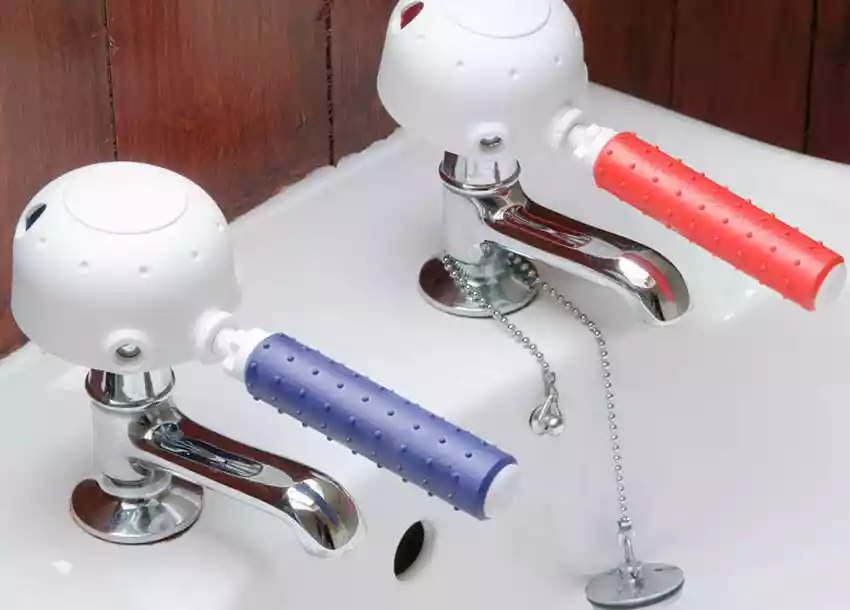
by Jon Pearce | 21st Jun, 2025 | Accessibility

Far from being a sign that you are losing your independence, disabled washing aids in fact, can mean quite the opposite. For people living with a disability, the simple task of washing can be a challenge, yet feeling safe while you bathe is very important.
Daily living aids, including disabled washing aids for disability bathrooms, can help people become more confident at being alone, enhance independence and simply make life easier.
To help you choose, we have put together a guide to our top washing aids for people with disabilities.
Are you affected by mobility issues when bathing?
Simply fill out a quick form and see how we can transform the way you bathe.
Request Free Brochure
- Non-Slip Bath Discs
- Hair Washing Aids
- Shower or Bath Stools
- Long handled washing devices
- Tap Turners
- Bath Lifts
- Grab Rails
- Walk-in baths or showers
1. Non-Slip Bath Discs
You have probably heard of a bathmat, but bath discs go one step further. Non-slip bath discs usually come as individual adhesive circles on a roll, for ease of application and use.
They provide a convenient, effective, and stylish way of applying a non-slip surface to your bath without ruining the aesthetic of your home décor. Unlike a normal bath mat, which has the prospect of moving or causing you to feel unstable, once stuck down, non-slip bath discs remain in place.
These discs are also comfortable, non-abrasive and will not irritate your bare skin. They’re also super hygienic. You clean them alongside your bath and due to the lack of extreme textures, they will not harbour bacteria like a regular bath mat, making cleaning quick and easy.
2. Hair Washing Aids
There’s nothing better than the feeling of freshly washed hair and fortunately there are some great hair-washing aids available. Washing trays and portable basins can make the difficult task of washing your hair whilst in your wheelchair much more pleasant.
The trays have raised edges allowing the user to have their hair washed by a carer or loved one whilst lying down. They also provide great neck support, so you feel comfortable yet pampered.
If you need a little extra support washing your hair independently, then a long-handled hair washer could be the game-changing solution you are looking for. Helping to increase your reach and massage shampoo into your scalp, this hair-washing aid allows the user to wash their hair with greater ease.
3. Shower or Bath Stools
When you live with physical limitations, daily tasks like getting in and out of a bath or standing upright and washing yourself in the shower might be difficult to do. Shower or bath stools are a great disabled washing aid to use as they can support the body whilst conserving your energy when you wash.
When you use a shower stool or bath stool, it increases your safety by providing you with a secure area within a potentially slippery zone, limiting your chance of falling.
Whether you use a wheelchair or find excessive movement tiring or difficult, then bath and shower stools offer a useful and simple solution. A little independence can go a long way and this is especially true if you’re in pain.
You can finally relax in the bath or shower and let the warm water ease your joints and muscles with a tiny addition to your bathroom.
4. Long handled washing devices
Another simple and cheap addition to your independence toolkit has to be a long-handled washing device. Designed to help people with flexibility issues to wash with minimum strain and maximum ease, you can find a range of long-handled washing aids including sponges and scrubbing brushes.
A long-handled back sponge is particularly useful for the elderly or for people who find it difficult to reach over their shoulders, however there are also aids available to help with hair washing too.
Using one couldn’t be simpler. It helps you clean your body without the need for bending and stretching, making it ideal for those suffering from joint pain and stiffness.
5. Tap Turners
Painful or weak wrists caused by conditions like arthritis and other mobility issues can make gripping and turning taps a challenge, and let’s face it, we need to turn taps several times a day!
Tap turners offer helpful assistance by attaching to the tap and providing a secure grip, meaning you can turn them on and off with ease. Although there are many different styles of tap turners, most feature comfort grips to further enhance the ease of use.
This accessible aid is also kind to pockets, making a difference to your daily life for just a small price between £5 to £20. There is also no formal installation required which means you can buy and fit them yourself with immediate benefit.
6. Bath Lifts
There’s nothing quite like relaxing in a warm bath, especially when you experience chronic pain and aching muscles and joints. Add the stress-relieving benefits, then it’s not surprising many people with disabilities like to use a bath as part of their weekly routine. Bath lifts provide a safe option for bathing for those with limited mobility.
Available in a range of designs and sizes, bath lifts are typically battery-operated using a remote for the person in control to gently lower and raise you in and out of the bath.
They promote a great sense of independence and access to bathing and personal care, which is so important to so many with disabilities, especially if they have previously relied on a loved one or carer.
7. Grab Rails
One of the easiest and most helpful disabled washing aids are suction grab rails. Designed to fix easily onto a tiled wall, grab rails are a simple solution to provide support when bathing or showering.
They also make a great travel companion as their suction fixture means you can easily take them to a different location or to simply move them around your own home.
Available in a range of sizes, shapes and colours, these bathing aids are a cheap and easy option for those looking to prevent falls and provide extra confidence and independence when washing. Make sure you are careful when fitting them into their position, however. Test them before use and be extra careful if they have been in the same position for a long time.
8. Walk-in baths or showers
You may love a refreshing shower or the pain-relieving benefits of a warm bath, but whichever is your preferred method of washing, there is a more permanent solution to make it accessible and safe.
Walk-in showers or wet rooms come with supportive features such as fold-away seats, built-in grab rails, easy temperature control systems and non-trip shower trays. This low and no-threshold tray makes getting in and out of the shower much safer and easier. These options are growing in popularity because they are very accommodating for the different sizes of bathrooms you find, whether they be very small or large, since they can be completely fitted to the space.
Walk-in baths are specifically designed to make the bathing experience much better for people with disabilities or low mobility. They offer an easy entry point with a low threshold as well as grab rails and seats for bathing. Walk-in baths often have non-slip flooring already in place to minimise the risk of slipping, making having a bath much more manageable and relaxing. Many designs are also very stylish which can add to the aesthetic of your bathroom rather than feel too clinical.
9. Soap Dispensing Brushes
For those with limited hand mobility or grip strength, applying soap or body wash can be challenging. Soap dispensing brushes are an innovative solution that combines a long-handled brush with a built-in soap dispenser. With a simple press of a button or squeeze of a handle, soap is released directly onto the bristles, allowing for easy lathering and scrubbing without the need to hold a slippery bar of soap or squeeze a bottle.
These brushes are particularly useful for individuals with arthritis, weakness, or limited reach, as they reduce the need for gripping and twisting motions. They also promote independence by enabling thorough cleaning of hard-to-reach areas like the back and feet. Many models feature soft, antibacterial bristles that are gentle on the skin while providing an effective cleanse.
10. Adjustable Showerheads with Handheld Options
A fixed showerhead can be difficult to manoeuvre, especially for those who need to remain seated while showering or have limited arm mobility. Adjustable and handheld showerheads offer greater flexibility, allowing users to direct water flow exactly where needed without straining. Many models come with different spray settings (such as mist, massage, or jet) to accommodate personal preferences and therapeutic needs.
Handheld showerheads often include a slide bar or adjustable mount, making them ideal for wheelchair users or those using shower stools. Some even feature a pause button to conserve water while lathering. This simple yet effective adaptation enhances comfort, safety, and independence during showering, ensuring a more pleasant and accessible experience.
Whether you opt for quick fixes or more permanent changes to your bathroom, finding a way to wash and bathe where you feel confident, comfortable and safe that suits your personal needs and taste is one of the best routes to gaining your independence.
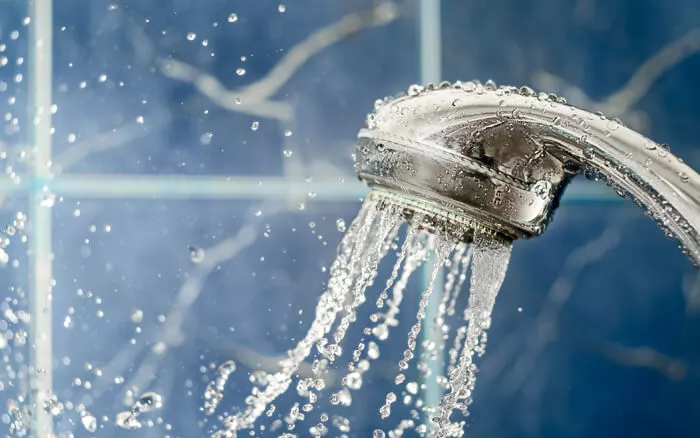
by Jon Pearce | 9th Apr, 2025 | Accessibility

Whether you’ve been advised to make bathroom adaptations, or you’d simply like to make your routine a little easier, you’re in the right place. This page is your creative catalogue.
In this guide, we’ll discuss 19 bathroom adaptations for disabled people, from small mobility aids to stylish walk-in showers, all towards creating a safe and comfortable assisted living bathroom environment. For each one, we’ll describe how they work and how they can benefit your bathroom routine. We’ve also included adaptation ideas specifically for wheelchair users and visually impaired people.
Once you’re finished reading, you’ll have all the inspiration you need to create a bathroom that perfectly suits your needs. Here’s a quick rundown of the categories before we dive into more detail:
- General mobility aids and adaptations
- Specialist toilets
- Aids and adaptations for wheelchair users
- Aids for visually impaired people
- Easy-access showers and baths
General mobility aids and bathroom adaptations
Mobility aids make bathrooms safer and more accessible. For many people, they’re essential parts of the bathroom. In this section, we’ve included a wide range of mobility aids, providing support in different areas of the room.
1. Grab rails
Grab rails are one of the most popular bathroom adaptations, purely because they’re simple, flexible, and effective – you can affix grab rails to any position that suits your specific needs.
The most common positions include above the bathtub, making it easier to get in and out of the tub, and inside the shower cubicle. They also come in a variety of shapes, materials, and colours, so you can adapt your bathroom without spoiling the decor.
For extra subtlety, you can buy grab rails that double up as bathroom accessories, such as towel rails, toilet roll holders or soap dishes. This is one bathroom adaptation that’s stylish as well as practical.
Want to learn more about where to place grab rails in your adapted bathroom? Our helpful guide has you more than covered.
Key benefits
- Provides support in any area of the bathroom
- Can suit most decor themes
- Subtle designs available
2. Assistance poles
While grab rails are standalone features affixed to the wall, assistance poles provide support from the floor to the ceiling. Usually placed by the toilet or bathtub, they make it easier to lift yourself up and down.
For people with limited mobility, or who are concerned about slippery floors, installing an assistance pole could be the right call for adapting your bathroom to make it more disability-friendly.
Key benefits
- Allows you to get up and down easily
- Various handle grips are available
- Increased independence for daily tasks
3. Bath lift
A bath lift is a powered seating device attached to your bathtub, lowering and elevating you in and out of the tub. Though they can be used independently, bath lifts are commonly used to assist carers in helping someone with limited mobility to access the bath safely. This would of course be quite a major adaptation to your bathroom, but if the person using it can’t lift themselves into the bath, this can be an excellent option to assist them.
Key benefits
- Easy for users and carers
- Comfortable design
- Ensures safe bathing
4. Bathing cushion
A bathing cushion is an inflatable pillow – controlled via remote – that helps lower and elevate your upper back, helping you get in and out of the bath. They’re similar to bath lifts.
Better still, if you travel anywhere, you can take your bathing cushion with you, making them one of the most flexible bathroom adaptations for disabled and elderly people. Overall, they don’t provide quite as much all-around support as powered bath lifts, but they’re a more affordable option.
Key benefits
- More affordable than a bath lift
- Easy to use
- Can be taken anywhere
5. Slip-resistant mats
Bathrooms are slippery places by nature. However, one of the easiest ways to safeguard yourself and those around you is by using slip-resistant mats.
As the name suggests, these sticky mats provide friction and support on otherwise slippery surfaces, such as your bathtub, shower tray, or bathroom floor. In essence, they allow you to move around the bathroom with more freedom and security.
Key benefits
- Can be used anywhere inside the bathroom
- Affordable and effective
- Beneficial for all levels of mobility
6. Shower seats
Foldable or fixed shower seats allow you to sit and wash comfortably inside the shower. And by taking the weight off your feet, you’re less likely to slip or feel discomfort in your joints. But what’s the difference between the two seats?
It comes down to flexibility – foldable seats use up less room but need to be folded up and down. Fixable seats are ready to use at any time – you don’t need to open or close the chair.
Shower seats are particularly useful aids for wheelchair users, allowing smoother access in and out of the shower, whether that’s on your own or with extra assistance.
Key benefits
- Increased safety
- Affixed or portable options are available
- Improved independence
7. Emergency pull string
Emergency pull strings are strategically placed cords that provide an easy way to call for assistance. They’re particularly useful aids to have in bathrooms because, inside the shower or bath, you’re unlikely to wear a personal trigger. Once pulled, the string will alert caregivers who can then help.
Key benefits
- Provides assurance to users and caregivers
- Can be placed anywhere in the bathroom
- Quick and easy way to summon help
Specialist toilets
Here, we’ve included the best adaptations for helping you or your loved ones use the toilet with privacy, comfort, and independence.
8. Automatic bidet wash and dry toilet
Auto wash and dry toilets are ideal for users who want independence and privacy. They work in the same way as regular toilets, except the cleaning functions – that is, the warm air and water features – are all remotely controlled.
Most automatic toilets will flush themselves once the user leaves. Overall, this is one of the higher-spec bathroom adaptations for disabled and elderly users.
Key benefits
- Offers independence and privacy
- Full control over water and air temperature
- Comfortable and easy to use
9. Height-powered toilet
Height-powered toilets automatically elevate and lower your lower body, making them ideal solutions for users with limited lower body mobility. You can also buy height-powered toilets with armrests, offering even more support.
Key benefits
- Offer more independence on the toilet
- Very easy to use
- Choice of tilt or full rise seats available
10. Raised-height toilet
Raised toilet seats are one of the most subtle home adaptations for disabled and elderly people. How so? In most cases, the height difference is almost impossible to spot.
Generally, for people with limited lower body mobility, these toilets are much easier to use than regular, low-level models.
Key benefits
- Height difference is very subtle
- Easy to install
- Variety of designs available
Request a Free Brochure
Simply fill out a quick form and see how we can transform the way you bathe.
Request Free Brochure
Aids and adaptations for wheelchair users
For wheelchair users, the bathroom can throw up unique challenges. Below, we’ve chosen the best adaptations to help solve those problems.
11. Floating or height-adjustable basins
In some bathrooms, it can be challenging to comfortably reach inside a basin and wash properly. The piping or fitted cabinet below gets in the way. An effective solution? Replace the obstructive basin with a floating or height-adjustable model.
Floating basins have free space below, all the way to the floor. This allows you to fit a wheelchair comfortably underneath. Alternatively, height-adjustable basins enable you to move the basin to your desired height each time, making them helpful bathroom aids for people with restricted growth, too.
Key benefits
- Attractive additions to any bathroom
- Easy to install
- Improved hand hygiene
12. Sliding doors
When it comes to bathroom adaptations for disabled and elderly people, in particular for wheelchair users, doors are often overlooked.
For example, swing-hinge doors can sometimes prove challenging or time-consuming for wheelchair users. On the other hand, sliding doors require less effort to open, close, and lock properly, and they take up less floor space.
Key benefits
- Affords more floor space
- Trip-free access
- Easy to use
13. Widening doorways
Some doorways might not be wide enough to allow easy access for people using wheelchairs. To fix this, you can have your bathroom doorway widened.
But how wide should you go? Depending on the size of the wheelchair, the new doorway should measure at least 40 inches to 48 inches wide.
Key benefits
- Increased independence
- Assurance for carers and wheelchair users
- Makes your bathroom routine far quicker and easier
14. Strategically-placed light switches
Just like swinging doors, light switches are one of the most overlooked home adaptations for disabled people. By strategically placing your light switches, you can turn entering and leaving the bathroom into a more seamless task. So, what’s the most suitable height?
Generally speaking, for front-on approaches in the wheelchair, the light switch shouldn’t be higher than 48 inches. For side-on approaches, it shouldn’t be higher than about 54 inches. If the light switch is above a bathroom counter, it shouldn’t be higher than 40 inches from the ground.
Key benefits
- Improved safety with easy access to light
- Increased independence
- Benefits people with all levels of mobility
Aids for visually impaired people
In the UK, about two million people have some degree of sight loss. Thankfully, aids and adaptations for elderly and visually impaired people are becoming more readily available.
15. High contrast taps and tiling
If you’re visually impaired, then contrasting the colour and material of your taps and tiling can help you move around the bathroom more easily.
For instance, you could use a black tap against a white sink to help you locate the basin. Or, you could use different tiling materials to signify different areas of the bathroom. For example, wooden tiling could indicate the toilet area, while slab tiling could be used in the shower area.
Key benefits
- Increased independence
- Able to create a more stylish bathroom
- Makes daily tasks much easier
16. Voice-activated shower
This is one of the higher-spec bathroom adaptations for disabled people and those with visual impairments. Also known as a smart shower system, voice-activated showers allow you to control your shower, including the pressure and temperature, without touching a button.
If you’d occasionally prefer manual control, you can install high contrast LEDs to help you locate the shower buttons more easily.
Key benefits
- Very easy to use
- Add value to your property
- Can be controlled from anywhere in your home
Easy-access showers and baths
Rather than installing a few mobility aids here and there, you can opt for a new shower or bathtub altogether. Below, we’ll discuss the most popular types of accessible showers and baths.
17. Wet room
Wet rooms are one of most accessible bathroom features. First off, they don’t have any trip hazards. For that reason, they’re widely considered the most convenient option for disabled or elderly people.
Typically, open planned wet rooms are waterproofed shower areas of your bathroom and have drains flush to the floor. Rather than opening a shower door and stepping inside, you simply go in, wash, and leave.
After some wet room inspiration for your upcoming project, consult our breathtaking wet room ideas blog!
Key benefits
- Practical for users and carers
- Save space in the bathroom
- Cost effective adaptation
18. Walk-in shower
Unlike wet rooms, walk-in showers usually have an elevated shower tray – albeit a very low one. They also come with one or two partitions. Overall, they’re still easily accessible for disabled and elderly people, without any doors or high steps to worry about.
Key benefits
- Practical for carers and users
- Stylish addition to any bathroom
- Increased independence
19. Walk-in bath
For people with limited mobility, it can be tricky getting in and out of the bath. Walk-in baths make the process far easier. Instead of clambering in and out of the tub, you simply open the side door and get in. There are a number of designs available, suitable for different tastes, budgets, and size of bathroom.
Key benefits
- Increased independence
- Makes bathing quicker and easier
- Wide choice of designs available
Aids and adaptations for elderly and disabled – A round-up
From grab bars to wet rooms, bathroom adaptations for disabled people are worthwhile investments. And these days, there are plenty of subtle and stylish options out there, providing extra levels of safety and accessibility.
Ultimately, the right aids and adaptations for your bathroom depend on your needs. For instance, wheelchair users might want to widen the door or install floating basins. Visually impaired people might prefer voice-activated showers, while elderly people will likely find better use from a bath cushion.
In our opinion, if there’s something that can improve your safety, comfort, and accessibility in your bathroom, it’s worth installing.
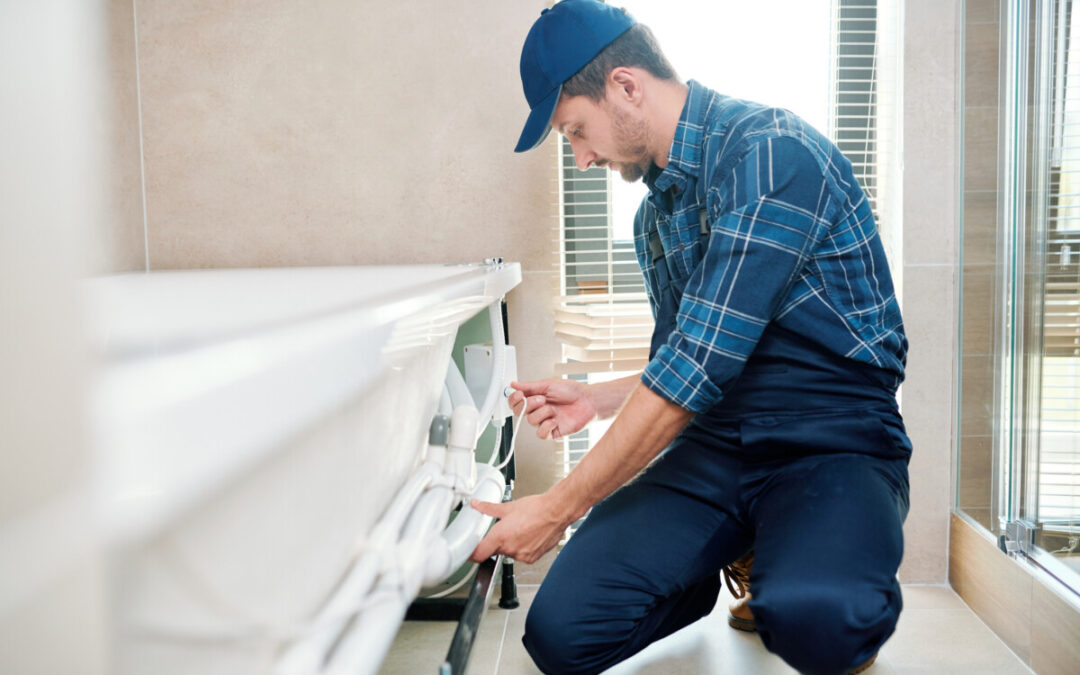
by Joel Griffiths | 7th Aug, 2024 | Accessibility, Bathroom, Health, news
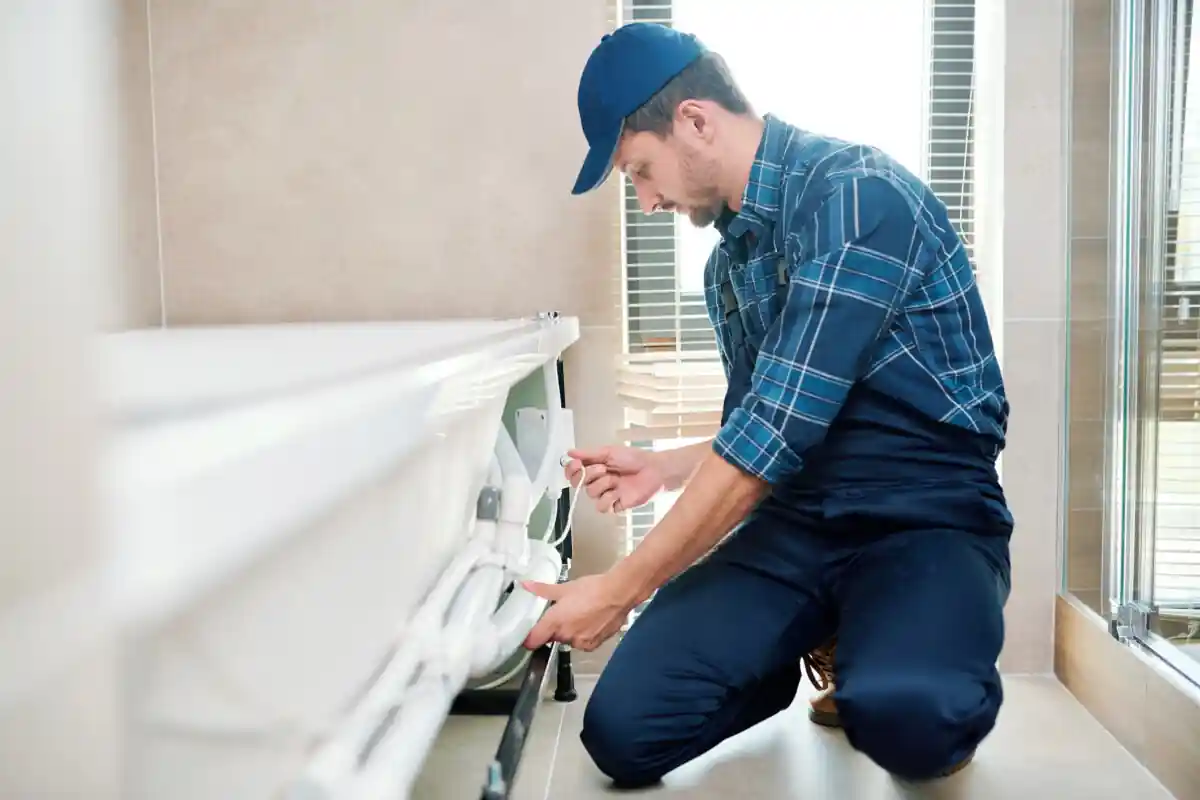
Bathroom renovations are a wonderful way to transform your functional space into a spa-like sanctuary where you can relax and unwind. Whether you’re looking to renovate because you want to upgrade your facilities, or you’d like to swap your standard units for disabled-friendly ones, it’s important to have a clear understanding of what the process entails.
Of course, a huge part of this is the renovation cost. While exact numbers can vary massively, there are several factors that will determine how much your total expenditure will be. Let’s delve into the details of how much does a bathroom renovation cost?
What are the typical bathroom installation costs?
When you are renovating your bathroom completely, there are lots of elements that need to be bought that will all have a significant role in the overall cost. For example, what flooring are you considering – expertly soured marble or easy-to-access vinyl? Then, regarding your fixtures (toilet, basin, bath, etc.), would you prefer designer or budget-friendly styles? In this part of our guide, we’re going to delve into each of the typical fixtures and elements that you’ll want to consider, and how they will affect your bathroom installation cost.
Toilet
A toilet is one of the most important and practical features of your new bathroom. However, the cost can vary from hundreds to thousands. So, what is the difference? A standard two-piece toilet is a traditional choice – consisting of a separate bowl and tank that are joined during construction. They are normally a more cost-effective option as they are simple to fit and commonly produced. A more expensive option is a wall-mounted model.
These sleek designs take up less floor space and have the bulky tank hidden or boxed into the wall. However, because of the additional work it takes to fit them, they will come at a higher cost. If you really want a luxurious final addition to your bathroom, you may consider a smart toilet. These clever designs have high-tech features such as heated seats and bidet functions. As they require an electric connection, these do tend to come at the higher end of the expense scale due to increased fitting cost as well as being a pricier model. The type of toilet you go for will also impact the ease of cleaning.
Basin
Similarly, there are different basins that can soon stack up the cost of your overall renovation. Pedestal basins are probably the most cost-effective. They consist of a simple bowl, attached to the ground on a pedestal that conceals the plumbing. If you prefer a more sleek, contemporary look – you might consider a wall-mounted unit.
These give the appearance of a larger space, as the space underneath is usually clear, and the plumbing is concealed into the wall. However, with that comes larger installation costs. Then you’ve got vanity units that hold bowl basins – these are easy to plumb in and can easily hide pipes, however the unit themself is often an expensive cost.
Bath / shower
There are many bath and shower units to pick from – including your standard tub bath, cubicle shower, mobility style baths that allow easy access and walk-in showers that have a minimal threshold to the floor. These all vary significantly in cost, mainly due to the plumbing works and floor preparation needed to install.
Taps
When it comes to taps, you can get your classic mixer and pillar options, which all come at a relatively standard cost. Then, you have wall-mounted options that’ll need to be plumbed in and concealed into the wall, therefore raising the cost due to installation. If you want the latest high-tech offering, you can get sensor taps that come on and off automatically when in use. However, due to the wiring involved for these – the installation is usually a lot more.
Flooring and lighting
We’ve spoken about the most common fixtures, and now it’s time to consider your flooring and lighting. Common bathroom flooring could be ceramic tiles, natural stone, vinyl flooring or laminate flooring. These all vary wildly in cost, with vinyl being an easy-to-source and accessible choice and tiles and stone rising with the more premium they are. Other things to consider that may raise your bathroom renovation price would be whether you’d like a waterproofing course underneath your floor. These are vital in mobility wet rooms.
In terms of lighting, you can have fitted in strip lights to accentuate certain parts of your bathroom. Or, you can go for regular wall and ceiling lights. The more electrical work needed to wire these will of course add to the cost, as will each light and bulb itself.
Extra features
With any renovation, there will always be additional extras that will bump up the cost of your renovation. From in-built speakers to thermo jets in your pool – there are so many things to consider, but ultimately, it comes down to how much you have budgeted and what luxuries you can afford.
Request a Free Brochure
Simply fill out a quick form and see how we can transform the way you bathe.
Request Free Brochure
How much does an average bathroom renovation cost?
We have spoken about the exacting things that can vary as part of your bathroom renovation and how you can budget for each specific fixture. However, what other things should be factored in when wondering how much an average bathroom renovation cost?
First of all, how much work do you need completing by a tradesman? As well as a plumber, you may need damp specialists, electricians, tilers and even carpenters. Think about which labourers you will need for your project – as this will add to the cost.
It will also come down to the scope of your renovations. Are you looking for a full disabled bathroom makeover? Or do you just want to upgrade some fixtures?
Why do bathroom renovation costs vary?
Bathroom renovation costs can vary massively due to several factors. Of course, we’ve already detailed some of these, but here are some other things to consider:
Where in the country you are based
Like anything, tradesman and labour costs are different depending on where you are. It all comes down to supply and demand – as well as local market rates.
The size of your bathroom
It may sound obvious – but the bigger your space, the more cost involved. That’s because you’ll be using more materials, which in turn takes a longer time to fit.
Special features
The complexity of the job at hand will always add to the overall cost. For example, if you wanted a carpenter to do special in-built cupboards. These are the areas that can quickly stack up in price.
Are there any hidden bathroom costs?
Hopefully your bathroom renovation is smooth sailing without any issues. However, when things go wrong, you might see some extra costs. For example, discovering water damage when you remove old units. Or, unexpected delays if your new fixtures need sourcing from somewhere specialist.
The average bathroom renovation cost in the UK can be influenced by multiple factors, from the fixtures you want included to the labour costs included. By understanding all the elements involved, you can begin to form a realistic budget and know what places you can cut back if you need to.
Whether you want a simple reconfiguration for an easier bathing routine or you want a full luxurious makeover, careful planning should be involved to make sure it’s within your budget and you can get exactly what you want from your space.
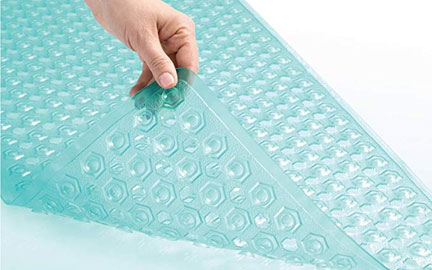
by mobilityplus | 10th Aug, 2023 | Accessibility
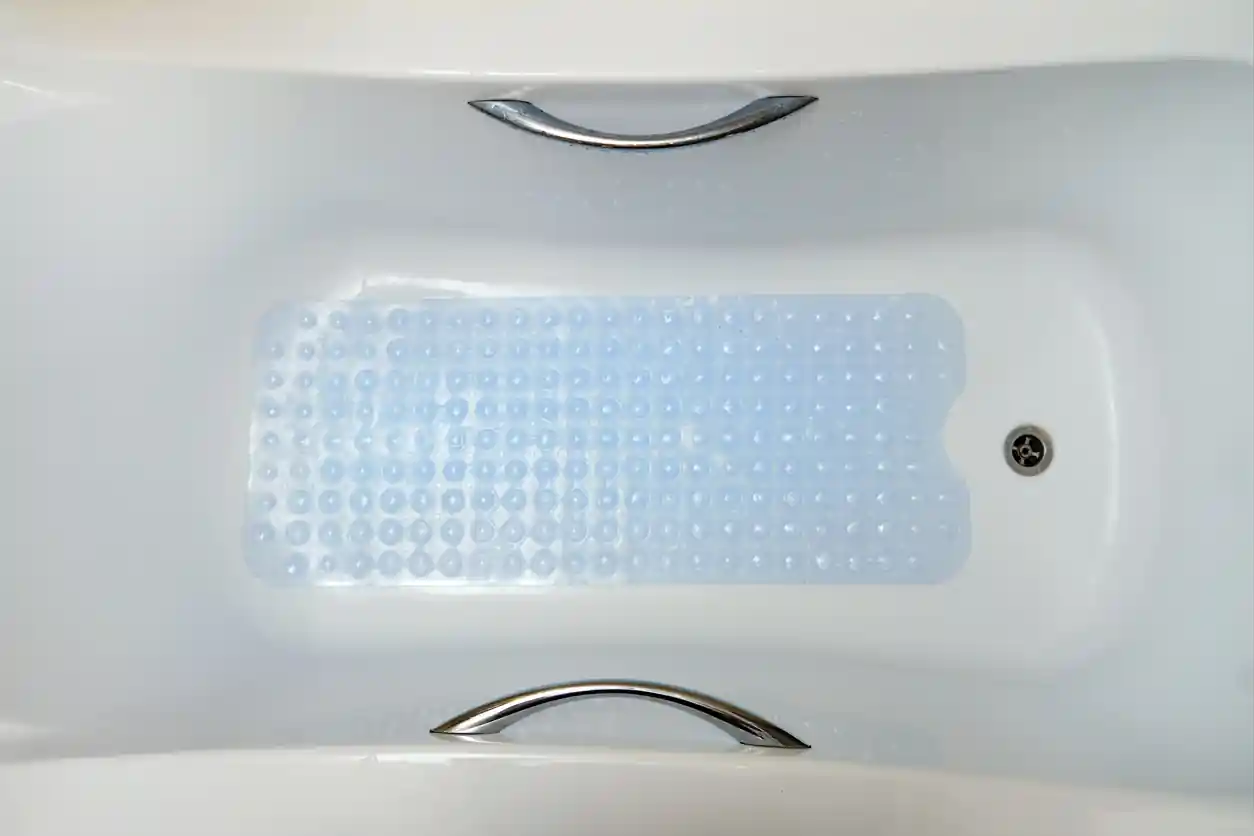
In 2008, it was estimated by the Centre of Disease Control that around 21.8 m people in the United States would have a non-fatal fall in the bathroom. While this research isn’t the most up-to-date, it does give an indicator of just how many people have falls in the bathroom each year. Trends have also not changed drastically around the type of bathrooms people use, so it’s likely that these statistics are still very much representative of the situation people face when bathing.
While these falls are more manageable during younger years, once we enter the later period of our lives, these falls can become severe and even dangerous. Older people are also more likely to have falls, due to a combination of factors, including balance problems, muscle weakness, and poor vision. Long-term health conditions can also be factors.
In the UK, falls for people over the age of 75 are actually the most common cause of injury-related deaths, according to the NHS. Therefore, it’s absolutely essential that people are aware of the situation, and that we reduce the risk of falls where possible – including in the bathroom.
Request a Free Brochure
Simply fill out a quick form and see how we can transform the way you bathe.
Request Free Brochure
- Slip-resistant wet room flooring – the alternative to anti-slip bathroom mats
- Can I get slip-resistant built into my bath?
- Pairing anti-slip mats with other mobility bathing adaptions
- What are my options?
The Anti-Slip Bath Mat Summed Up
The standard, go-to option for most households. These are typically made from rubber, with suction cups on the bottom, that help you grip to the bath or shower floor and prevent slipping.
Many people consider anti-slip bath mats to be a bit of an eyesore. Many are not stylish and ruin the aesthetics of their bathroom. However, they are chosen for practicality and not for their looks.
Anti-slip bath mats can quite easily collect dirt, grime and be difficult to keep clean in your bathroom. After a few months, this will not come off, resulting in a permanently dirty bath mat. This can create something that is unclean and unhygienic. Bath mats can also become loose, making them a trip hazard if improperly secured. Make sure you check the fitting regularly.
Slip-resistant wet room flooring: an alternative to anti-slip bathroom mats
One of the best ways to reduce the risk of falls, as a shower mat alternative, is by not using an anti-slip mat, is by using slip-resistant materials in surfaces that get wet.
For example, if you have a wet room, always get this installed with slip-resistant wet room flooring (vinyl or tiled). Specially made surfaces are designed to help you get more grip on the flooring, even when wet. Slip-resistant flooring can be designed in a variety of ways. This can be done through acid etching, slip-resistant coatings, and other methods. Make sure you only use flooring that Is recommended for this specific use.
Can I get slip-resistant built into my bath?
Often, many bathroom companies will use slip-resistant materials when constructing bathroom products, as there is a higher risk of falls. As slip-resistant surfaces in the bathroom are so important for everyone’s safety, not just the less mobile or elderly, they are regularly used as a base for baths and shower trays. For example, our modern walk-in bath features a slip-resistant base, to help prevent falls that might occur when entering or exiting the bathtub.
Pairing anti-slip mats with other mobility bathing adaptions
Anti-slip mats on their own do not necessarily mean your bathroom is completely safe, as anti-slip mats do not account for people with mobility disabilities or in the cases of the elderly the difficulty of moving in general. However, other mobility bathing adaptions can help. Grab rails are one of the most common and best adaptions that can be added to a walk-in shower or walk-in bath, as they assist you in getting in and out of the shower or bath.
Pairing both will significantly reduce or even make it near impossible for any accidents to happen when doing your daily routine in a bathroom.
What are my options?
If you need a simple, quick fix, then an ant-slip bathmat is certainly an option. However, we would always suggest a more permanent solution if in the position to do so. Getting a walk-in bath or walk-in shower with slip-resistant flooring will always be a great long-term solution for bathroom safety, but also means your bathroom retains its natural style, uninterrupted by any mats that may not suit it.
If you have any questions about our slip-resistant flooring and products, give us a call, and we’ll be happy to go through any questions you have.
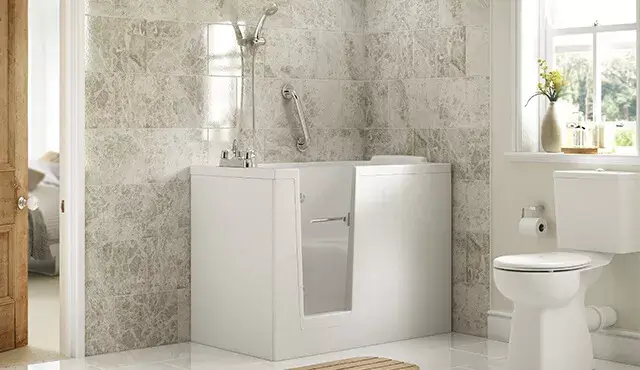
by Jon Pearce | 5th Apr, 2023 | Accessibility

Having a bath can have a positive impact on mood and well-being. But if you have a disability or limited mobility, access to safe bathing can be problematic. Even if you prefer to have a bath instead of a shower, you might find it difficult to get in and out of the bath safely and confidently.
In addition, carers may be at risk of injury when helping a family member or service user to access the bathtub. Back injuries are a common problem for anyone who helps people with mobility issues to get in and out of the bath.
A specialist accessible bath with door system can help to resolve these issues, allowing you to bathe in comfort and enjoy a long soak in a warm bath.
Request a Free Brochure
Simply fill out a quick form and see how we can transform the way you bathe.
Request Free Brochure
- What is a bath with door system?
- How do baths with doors work?
- Access the bath through the low-level step and door
- Close and seal the bath door
- Select water temperature and fill the bath
- Drain and leave
- The benefits of a walk-in bath with door
- Different types of walk-in baths
- Are bath panels with doors practical?
What is a bath with door system?
A bath with an integrated door is a fully accessible unit, which contains a small, watertight door within the side panel. The door can open both inwards or outwards depending on the model. A bath with door system enables a person with a disability or mobility issue to enjoy the comfort and relaxation of a bath, without the risk of trips and falls.
Baths with door systems are available in various styles. These include everything from the small, low-level door in a standard bathtub design to a deep, upright bath with a seat incorporated to aid upright bathing.
Walk-in baths from Mobility Plus are carefully designed to include all of the best safety features, helping to reduce the risk of accidents during bathing and injury to carers or family members.
Add-on features are available, including:
- Grab rails: Fixed to a wall with screws or suction cups, grab rails are used to help people with balance issues to steady themselves as they get in and out of the bath
- Thermostatic taps: Included as standard to give protection against scalding.
- Bathtub fillers: A bathtub filler mixes the hot and cold water to the desired temperature. The temperature remains constant, eliminating the need for adjustment and reducing the risk of the water being too hot or cold.
- Power seats: A power seat raises and lowers a person into the bath, making bathing safe and accessible to people with severe mobility issues or physical disabilities. The unit is secured to the bath floor with suction cups, and the seat rises and falls as required.
All of these features help to provide effective bathing solutions. The most appropriate option will depend on your level of mobility, but they can all help to maintain a sense of independence and dignity. These features also make it easier for carers to implement safe moving and handling practices, helping to reduce the risk of injury.
Did you know? During 2019/20, 68% of state pension age adults were living with a disability or mobility issue, compared to 41% of working age adults?
How do baths with doors work?
Whichever type of walk-in bath unit you choose, they are usually accessed in the following way:
Access the bath through the low-level step and door
Walk-in baths come with varying door heights. You will need to choose one according to your level of mobility. However, stepping in and out of the bath is much easier and safer with a low-level threshold than climbing over the side of the bath and into the water.
Close and seal the bath door
Once inside the bath, you must take care to close the door fully in order to ensure that it is sealed and watertight. The bath seal is the most important element of this type of bath. Making sure that it is secure will remove the risk of water spilling onto the bathroom floor, which could create a potential slip hazard. All of the walk-in baths in our range have a door that opens inwards, making them ideal for bathrooms with limited space.
Select water temperature and fill the bath
With our optional bath filler, you can choose the required water temperature using a rotary dial. That means there is no need to keep adjusting the taps to increase the hot or cold water. Advances in technology mean you can even do this using an app on your mobile phone. Once you’re happy with the temperature, press the start button and allow the water to flow. After that, all you need to do is sit back and relax. A standard bath filler will protect against scalding due to it’s thermostatic valve.
Drain and leave
Once you’ve enjoyed your bath and you’re feeling relaxed, simply drain the bath and exit through the door. Remember to leave your towel at the side before entering, so you can partly dry off as you wait for the water to fully drain.
The benefits of a walk-in bath with door
- Safety for the user: A walk-in bath is safer than a traditional bath. A low threshold reduces the risk of tripping, making it more accessible to people with mobility issues.
- Comfort: Walk-in baths provide an element of comfort and relaxation, especially if you find it difficult to stand in the shower or use a standard bathtub. Walk-in bathtubs have lower entryways and are often deeper than traditional tubs, making it easier to clean your upper body.
- Health: Water has a soothing effect on the body and mind, and a walk-in bath can help to improve overall health in many ways, including:
- Symptom relief. Muscle or joint issues, such as arthritis, diabetes, rheumatism and general muscle or joint pain and stiffness can benefit from the soothing effects of a walk-in tub.
Did you know? 10% of UK adults suffer from arthritis and taking a hot bath can help relieve symptoms?
- Better circulation: Improved overall circulation can lead to increased mobility and less pain.
- Relaxation and stress relief: Lying in water creates a relaxing atmosphere, which in turn can help to improve the quality of your sleep. Additional therapies, such as hydrotherapy, can help to massage and relax tired and aching muscles.
- Therapy: Some of our bath ranges can be used for therapeutic purposes, including chromotherapy. This is the belief that the colours of the spectrum, which permeate the bathtub, can aid in tissue regeneration. Chromotherapy has reportedly helped to reduce swelling, relieve pain and decrease inflammation, as well as reducing recovery times after medical or surgical procedures. Our Hampton Elite range of baths incorporates this therapy into its design.
Different types of walk-in baths
We offer a range of different types of baths with doors. The right choice will depend on your individual requirements and level of mobility.
Full length bath with door
This is identical to a standard bath, but the side is a bath panel with access door. Once you have entered the bath through the access door, the bathing experience is the same as in a traditional bath. Our Leyburn range includes full length baths with doors.
Sit-up bath with door
A sit-up bath allows you to sit upright while bathing. This removes the need to stand up from a horizontal position when getting out of the bath.
Front or side opening
You can choose to have the access door at the side or at the front, according to the design and layout of your bathroom.
Are bath panels with doors practical?
Baths with doors can transform the lives of people who have previously struggled to access the bath. As we get older, we often feel that we are losing our independence. For some people, this is a worrying prospect. Installing a bath with a door to the bathroom helps people to continue living independently in the comfort of their own home.
A walk-in bath will also aid caregivers to help family members or service users to bathe safely, while also reducing the risk of injury to the bather and carer. The hydrotherapy feature on some baths helps with aches and pains in joints and muscles, providing a relaxing, soothing effect.
In comparison to wet rooms and walk-in showers, the right bath with door system can:
- Improve the bathing experience by helping to maintain independence, dignity, comfort and support
- Reduce the risk of bathroom accidents caused by slips or falls
- Ensure efficient moving and handling for carers assisting with bathing
- Reduce the risk of a musculoskeletal injuries to carers
At Mobility Plus, our range of walk-in baths are designed to suit your needs. A hydrotherapy spa option comes as standard with all of our models, and the non-slip floor keeps you safe every time you bathe.
With our free, no-obligation design and quote service, we can help you decide on a replacement unit, or discuss a complete bathroom redesign to make the space as safe and secure as possible.
Take a look at our full range of walk-in baths or request a free brochure to view all of the options at your leisure.
Whichever product you choose, our walk-in baths will help you to bathe confidently and independently again.

by mobilityplus | 30th Mar, 2023 | Accessibility

If you have been experiencing mobility challenges, you may be in the process of choosing a mobility aid. Introducing a mobility aid to your daily routine can be a fantastic way to increase your independence and add a bit of comfort as you are going about your daily business.
However, choosing a mobility aid can require some consideration. There are many options to choose from, and which one is right for you will depend on your specific mobility struggles as well as the demands of your lifestyle.
Luckily, here at Mobility Plus we have plenty of expertise in helping individuals choose the right mobility aid for their needs. Keep reading to learn more about the choices available and find out which mobility aid is right for you.
Request a Free Brochure
Simply fill out a quick form and see how we can transform the way you bathe.
Request Free Brochure
1. Canes
The first port of call for more mild mobility issues will be a cane. Using a cane can provide you with an additional point of support, which can hold up to 25 percent of a person’s body weight.
Using a cane is a great way to increase your stability, particularly if you have one leg that is weaker than the other. If you still want to walk around but need a little extra support, a cane is perfect for you. However, using one does require a little strength in your hand and arm to grip.
There are different options here – if your grip is weaker, you can opt for a horizontal grip cane. Some canes also have a quad base, allowing them to stand upright when not in use. This can be handy in that you don’t have to balance the cane, but it will be a little heavier to carry.
2. Walkers and Rollators
If you are looking for a little extra support, a walker or rollator might be for you. A walker has two or four legs and can support up to 50 percent of body weight. However, the walker must be lifted each time you take a step, requiring more hand and arm strength than a cane.
If this is not a viable option, you could consider a wheeled walker – also called a rollator. These have several wheels on the bottom of the legs and can be pushed along as you walk, rather than being lifted with each step. This makes manoeuvres easier and less tiring. However, if you have balance issues, the wheels may not provide enough stability for your needs.
3. Power Scooters
For those who are finding it difficult to walk long distances, a power scooter might be a better option. There are various models available, both for indoor and outdoor use, as well as lightweight or heavy-duty models.
Using a power scooter can be much less tiring than walking, however you will need some dexterity to operate it, as well as being comfortable sitting upright for an extended period of time. If you have arthritis, for example, this may not be the best option for you.
4. Manual Wheelchairs
If you have trouble sitting upright or operating the machinery of a scooter, a manual wheelchair might be your best option. Those with strength in the arms will be able to push the wheels easily to get around the house, or otherwise a loved one will easily be able to push the chair from behind.
There are various models of manual wheelchairs available, all suiting different needs. For example, individuals with spinal cord injuries often opt for ultra-lightweight models. These allow for various adjustments, including armrests and a range of different tyres.
5. Power Wheelchairs
Finally, there are power wheelchairs. There are countless variants when it comes to power wheelchairs, all with different features such as front-wheel drive, independent suspension and so on.
A power wheelchair will allow you to move around indoors and outdoors without having to self-propel or be pushed. They are also typically more compact than a mobility scooter, making them easier to manoeuvre.
As you can see, there are plenty of options when it comes to choosing your mobility aid. If you would like specialist advice on choosing a model to suit your lifestyle, call us for free, and we will be happy to assist you.










